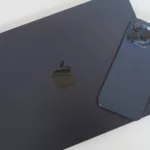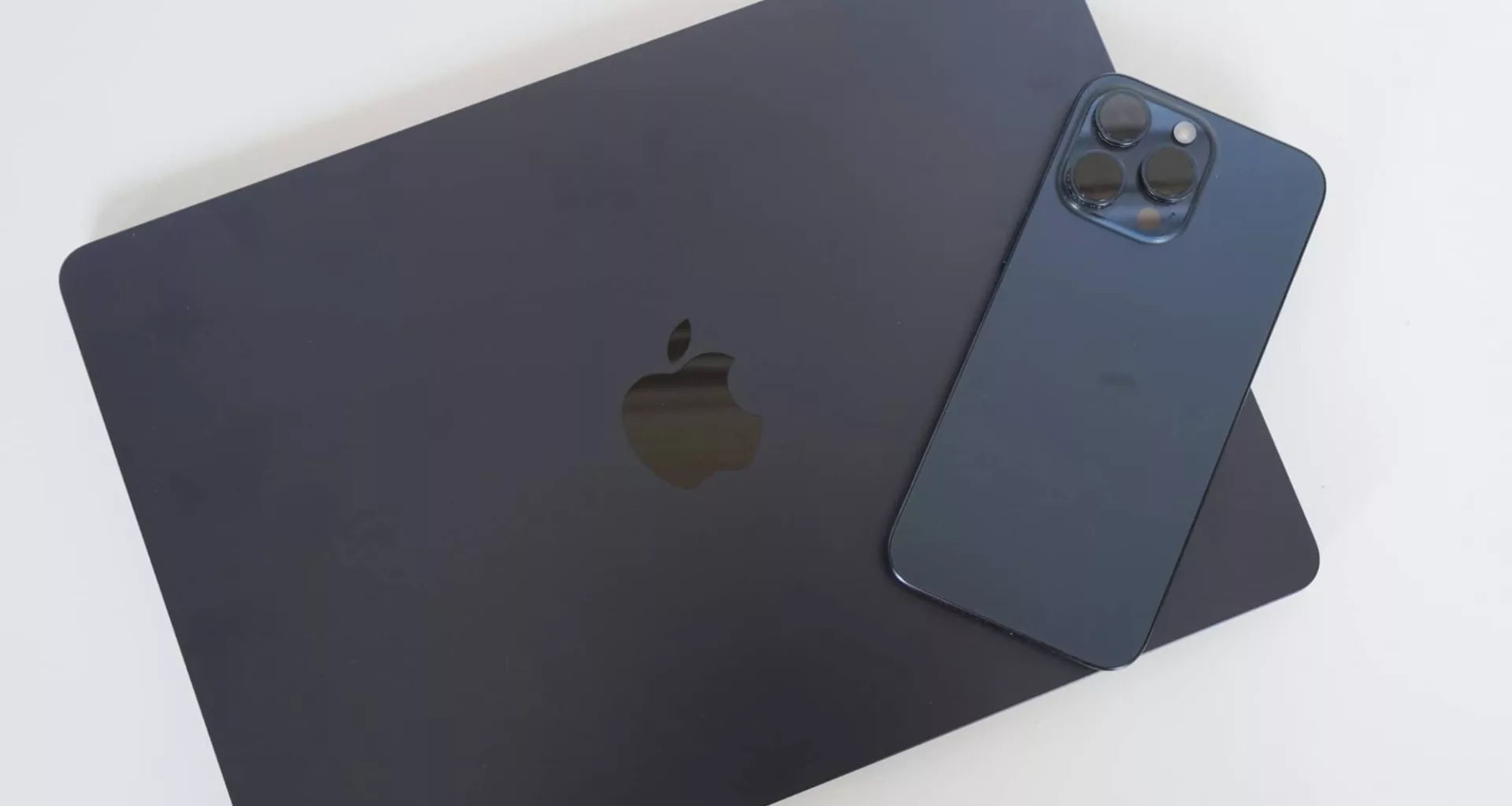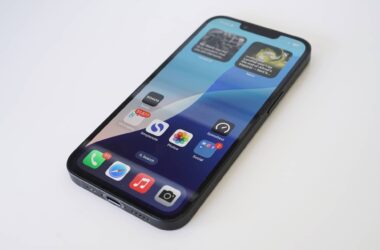Quick review
The good
The not-so-good
Thin, light, fast, and capable, the M3 MacBook Air is almost in a league of its own, getting nearly everything right. It practically sells itself.
It feels like it’s been forever since Apple introduced the world to its take on a thin laptop, something Steve Jobs introduced with a laptop in an envelope back in 2008. That was sixteen years ago, and Apple has been improving that laptop ever since.
Arguably one of the company’s most recognisable laptops, the Air has come to represent an almost perfect example of portable computing, delivering design, speed, and battery life in one handy package.
Apple itself has been tweaking it over time, and the formula keeps on getting better.
This year we’re seeing another iteration, and while it might look exactly like the last model, there are things about the M3 MacBook Air that still make it stand out. Is this one of the best portables you can buy today?

Design
It’s been a couple of years since Apple redesigned the MacBook Air, and the style still impresses. A flat edge and curved corners impart a lovely aesthetic to this sleek metal machine, and Apple has balanced the weight beautifully, too.
That is roughly the same as it was when we first took a look at the 13 inch M2 MacBook Air, so we’re still in love, and you get a choice between silvers, greys, the gold of starlight, and midnight, a delightfully dark blue that feels like a bold black, but offers a colder colour throughout. It’s a little like the titanium blue of the iPhone 15 Pro and iPhone 15 Pro Max.
It picks up fingerprints easily, but it’s nothing you can’t fix with a quick wipe-down of your laptop. We love it.

Features
Inside, you’ll find Apple’s latest chip, the M3, though the standard option also found in the iMac from last year. More powerful incarnations can be found in the MacBook Pro, available in both the M3 Pro and M3 Max.
This M3 isn’t quite the same, but it shares features, with Apple also bringing support for WiFi 6E in the new chip, as well as an 8-core CPU, up to a 10-core GPU, a 16-core Neural Engine (because this is technically an AI PC), and a choice of either 8 or 16GB RAM (configurable to 24GB), as well as a starting storage of 256GB SSD that can be customised to 2TB, though only at the time of ordering.

There are two USB-C/Thunderbolt 3 ports in the M3 MacBook Air, as well as a MagSafe port, plus a 3.5mm headset jack should you still want it.
Apple also includes a FaceTime HD camera up top in a little notch, and a four-speaker sound system in the casing supporting Dolby Atmos Spatial Audio, handy if you happen to subscribe to Apple Music, or just want to watch a few films or shows on the 13.6 inch screen.
| Model | Apple MacBook Air 13-inch (M3) |
| Chip | Apple Silicon M3 (8-core CPU/10-core GPU) |
| RAM/Storage | 16GB RAM; 24GB storage |
| OS | macOS 14.4 Sonoma |
| Connections | WiFi 6E, Bluetooth 5.3, 2x Thunderbolt 3/USB 4, 3.5mm, MagSafe |
| Thickness & Weight | 11.3mm, 1.24kg |
| Price | Starting from $1799 AUD |
Display
There aren’t any changes to the screen from what we saw last time in the M2 Air, which means you get a lovely 13.6 inch Liquid Retina LCD with Apple’s white-balancing True Tone technology running a resolution of 2560×1664.
Thanks to the settings in macOS, you never really feel like you’re looking at the pixels, so you’ll always get this lovely sense of clarity, thanks in part to how it all comes together.

There’s support for one billion colours and the P3 colour gamut, but you’ll miss out on the “XDR” extreme dynamic range Apple reserves for the MacBook Pro, as well as the fast refresh rates also found in that model.
It’s a bit of a shame we’re not seeing mini-LED or OLED technologies yet, either, but it’s such a minor issue. Even without high refresh rates or newer screen technologies, the MacBook Air screen is a joy to use. It is lovely.
In-use
The same can be said for the keyboard and mouse, which sees a great keyboard and mouse in action, which we typed this review on.
The trackpad is spacious and offers a nice click, while the keys are satisfying to type on, as well. You’ll find a fingerprint sensor in the top right, and it is a cinch to log in using just your finger.
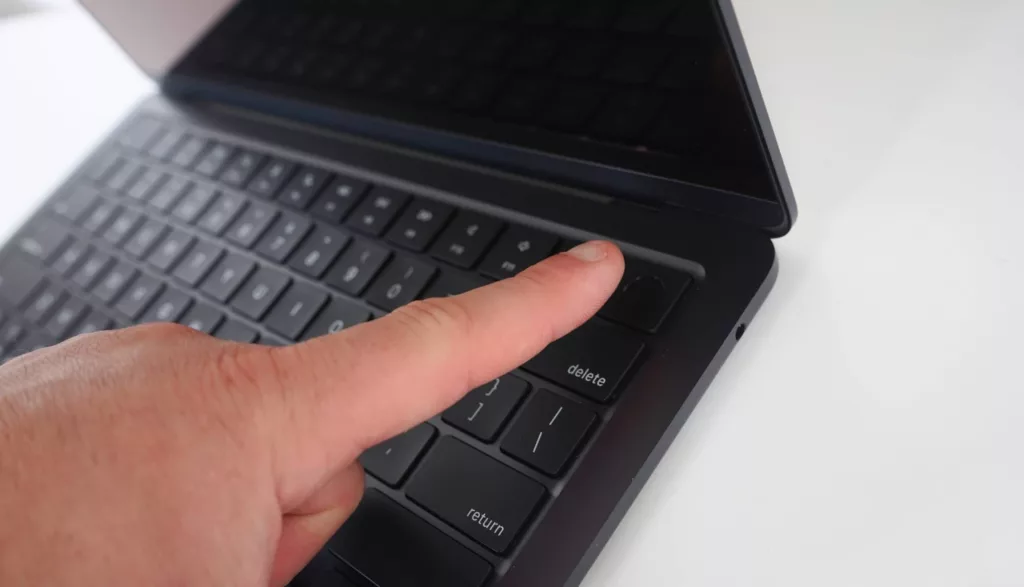
Apple’s M3 Air is also super light and easy to carry, with the 1.24kg weight hard to notice. It may make you wonder why you’ve been lugging any other hefty laptop around for so long.
You’ll also get support for two monitors should you decide to shut your laptop closed. No doubt a handy feature for the WFH world, you will need to plug the monitors directly into the Thunderbolt ports on the laptop, but that shouldn’t be a problem for the folks who need it.
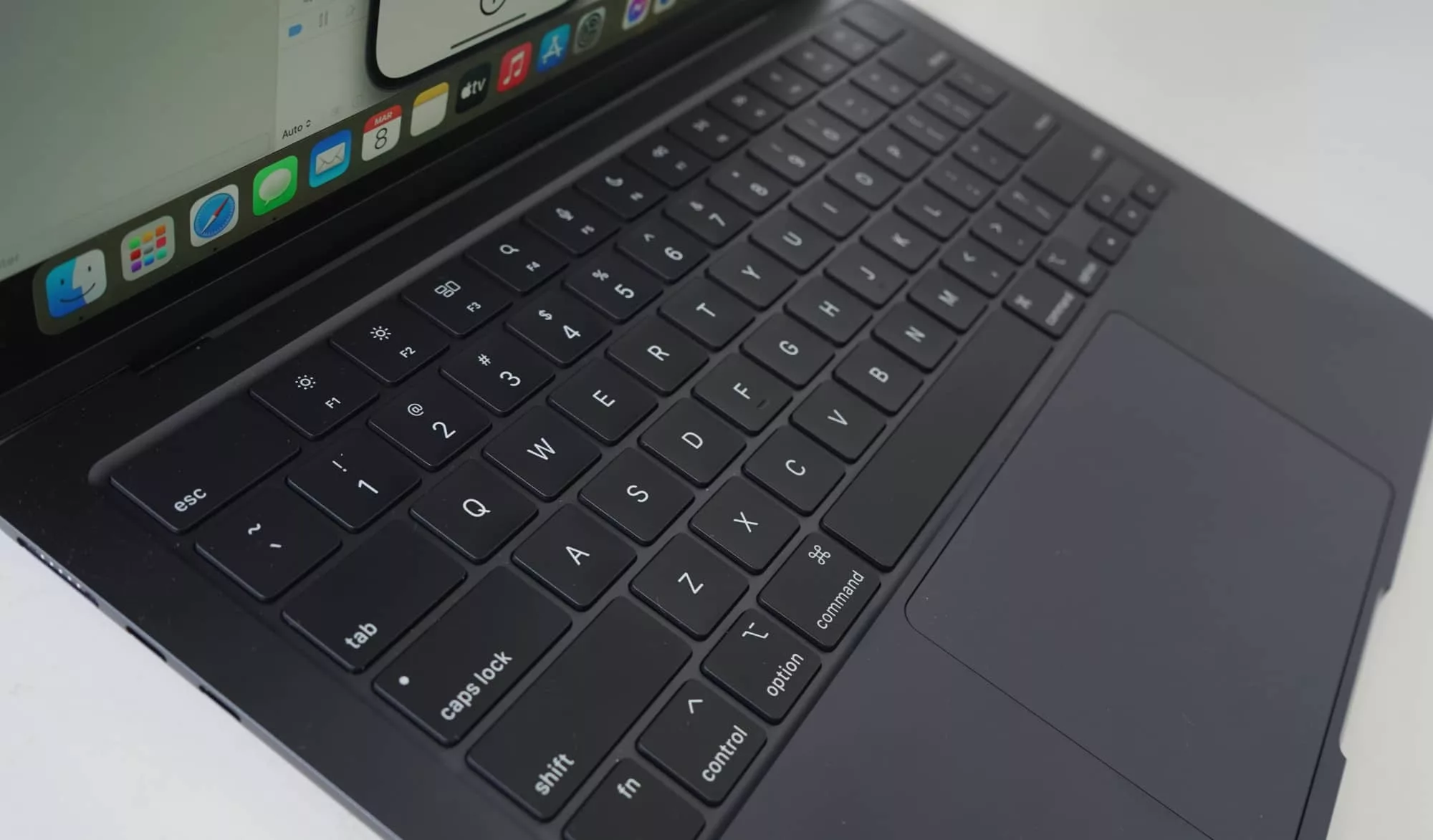
Performance
The extra monitor support isn’t the only thing the update affords. With a new chip inside, you can expect some improvements to performance, which is impressive given the previous MacBook Air was so good in the first place.
We struggled to push the M2 Air to its limits in the 13 inch, and it was the same with the 15 inch. We test our review Macs with code compiles in Xcode, with video projects in Final Cut Pro, with sound editing in Logic Pro, with games via Steam, and with a dash of 3D development via the Unreal Engine, and outside of the last one, the M2 delivered.
Our benchmarks showed just as much. Unsurprisingly, the M3 Air throttles previous generations of the Air, making for an ideal upgrade if you had either an Intel-based Air or even the M1.
Worth noting that the M1 is still a fairly capable machine, so you might not see much of a performance increase jumping from M1 to M3.
But it is definitely there in benchmarking, and you’d get a nicer screen and sound system, too, among other features.
Impressively, the 13 inch M3 MacBook Air also has MacBook Pro users in its sights, largely because of what that new M3 chip is capable of. You’d never realise you technically had a MacBook Pro-beater in your midst, but that’s exactly what’s on offer here, based on the benchmarks we’ve taken over the years.
The M3 Air has more grunt than in almost every test against a MacBook Pro with an M1 Pro, giving you an idea of just how far the chip development has gone at Apple.
It can’t quite hold a candle to the M2 Max MacBook Pro, while the recent update that is the M3 Max has scores of more performance in just about every way, but these classes of machine aren’t meant to complete.
The point is more that the M3 MacBook Air has so much grunt, it can almost compete with the MacBook Pro, and it can even match the MacBook Pro from not too long ago. That is impressive, especially for this class of machine.
And it’s impressive for other reasons, too.
The M3 Air is a fan-less computer, so it doesn’t make a sound. It’s thin and light and powerful and portable.
It’s about the best laptop around. There doesn’t seem to be a single compromise. It’s stunning.
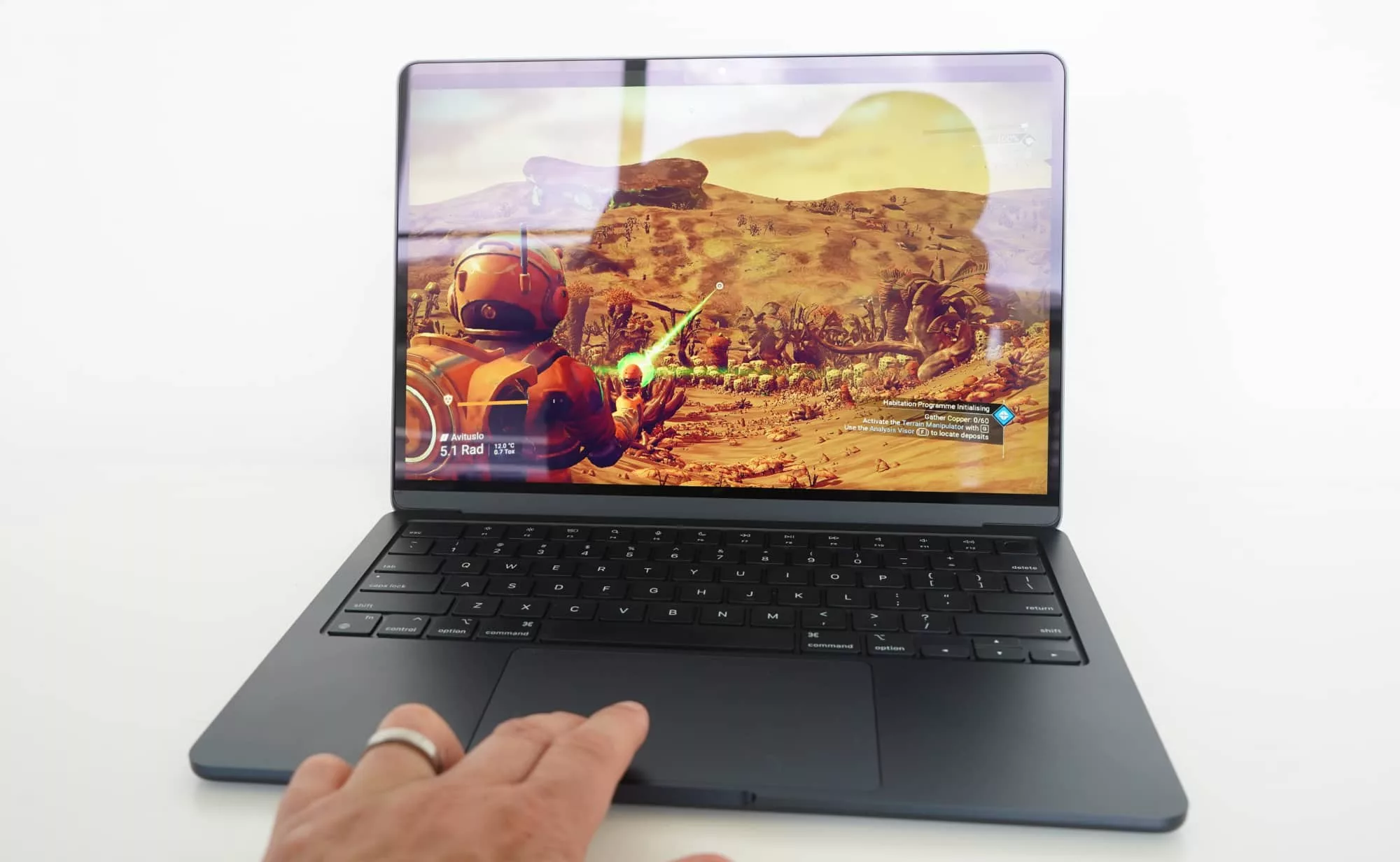
Outside of the benchmarks and tested with real-world uses, we’ve compiled code slightly faster, edited a video and exported it with speed, and even played a game via Steam.
We don’t game as much as we used to — #parentlyfe — but No Man’s Sky performed beautifully, grabbing slip 30fps performance in both High and Ultra graphics settings at 1920×1200, giving you the vibe that you really could game on a MacBook Air.
It should come as no surprise that productivity apps performed beautifully, providing almost pro-level performance in a pint-sized design.
In those workloads — Xcode compiling in SwiftUI, audio editing in Logic Pro, video in Final Cut Pro, and loading a triangle-heavy Unreal Engine map — only the latter struggled, which hardly comes as a surprise since it really prefers the extra grunt of the Pro and Max chips used in the Mac Studio and MacBook Pro.
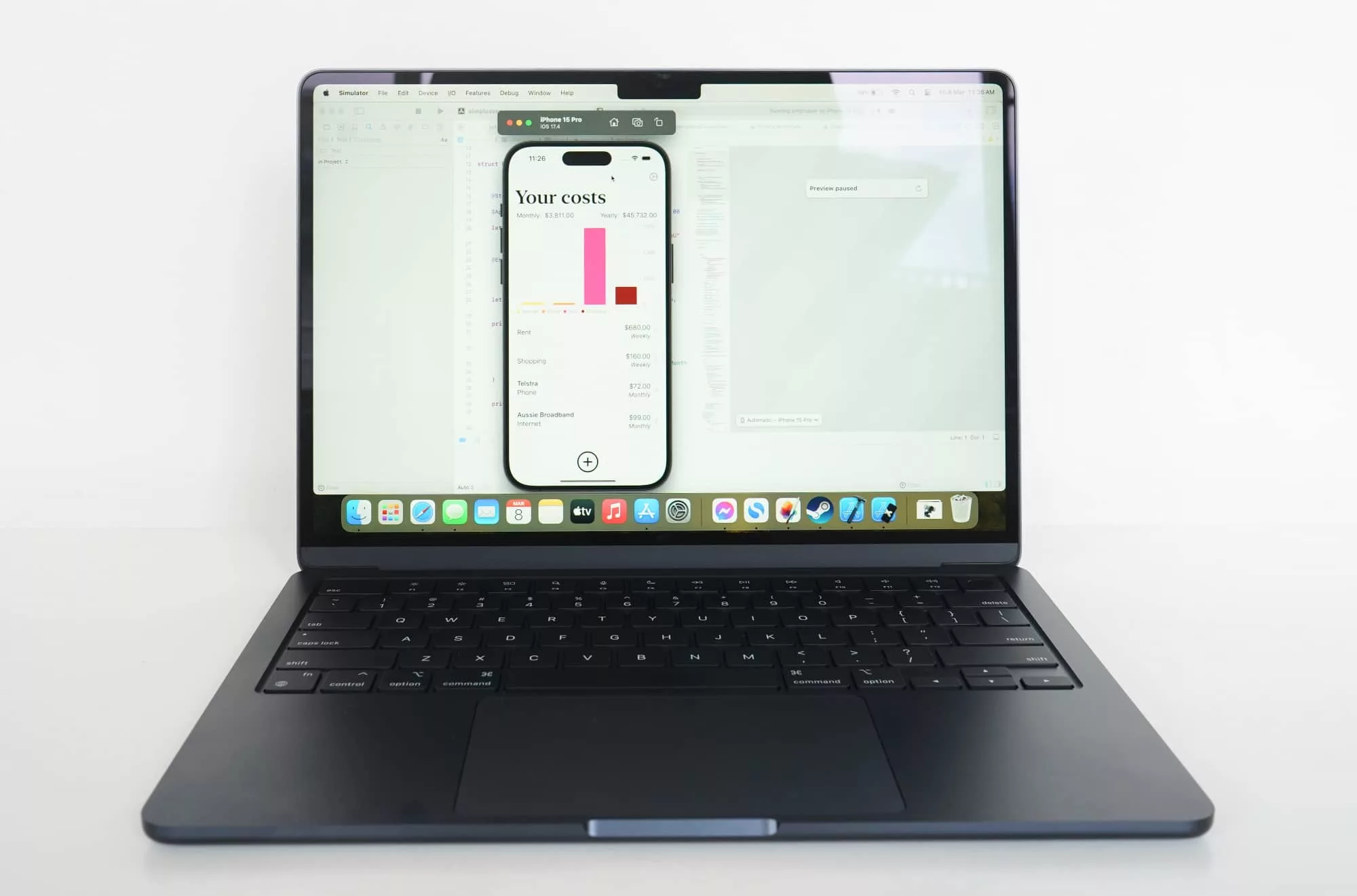
There’s an argument that the base model’s 8GB RAM could limit performance for users. That’s possible, and indeed reviewing a 16GB model as we did meant we didn’t experience those problems. That being said, it’s a limitation that mightn’t actually be a problem for most people, and will vary based on what they need to use the MBA for.
The sheet number of uses available to this MacBook Air is stunning, whether you’re writing, working on spreadsheets, coding, editing audio, working in video, dealing with graphics and photos, or even just playing a game.
Apple makes a “pro” laptop, but this isn’t it. And that’s fine. The M3 Air can still do “pro” workloads, as evidenced by what we experienced.
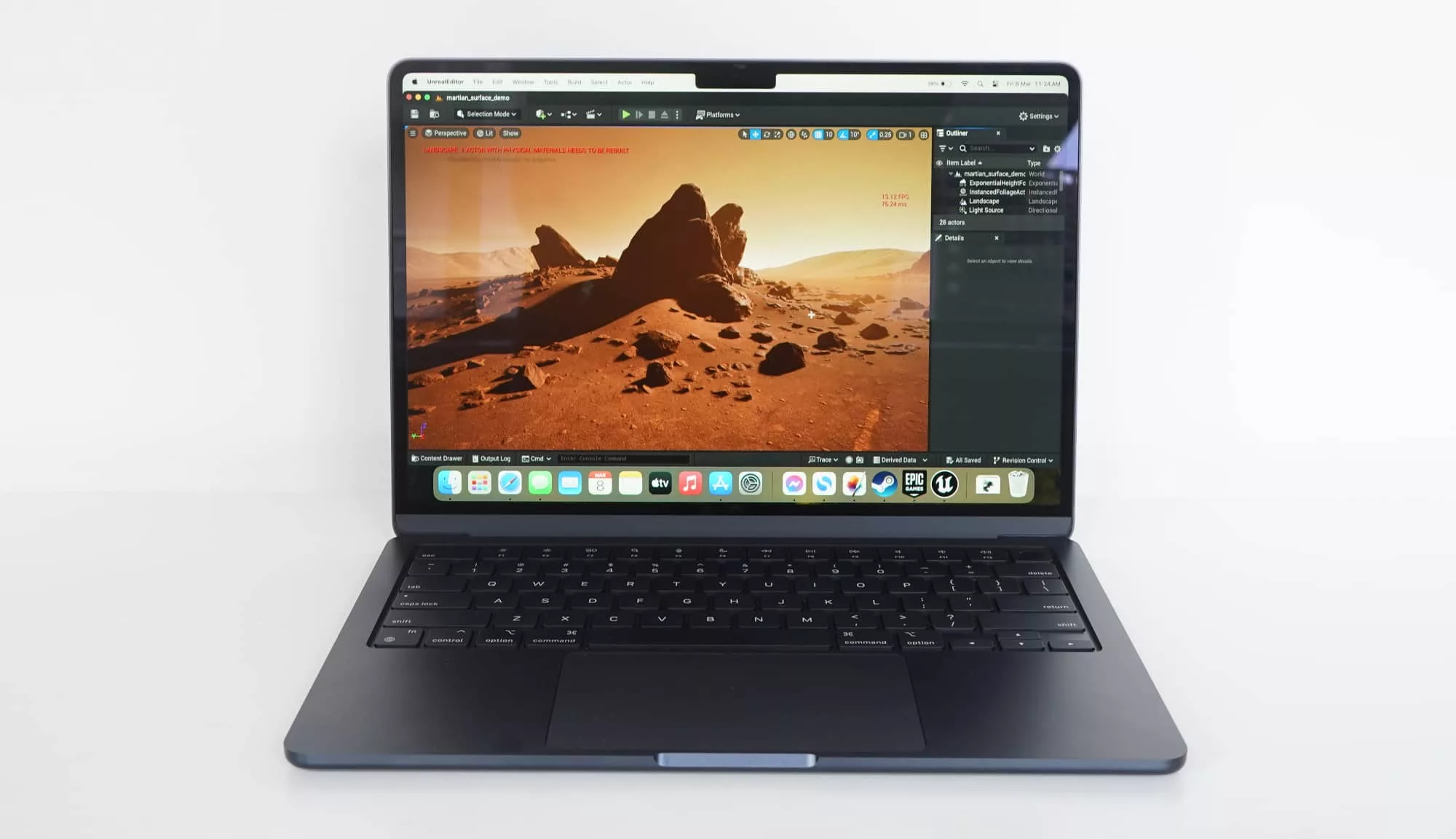
Battery
If you think the performance is solid, wait until you see the battery life.
Easily one of the best features Apple Silicon delivers on, the battery on offer in the M3 Air can hit up to 18 hours if you’re sticking to the basics, though anyone working with the laptop for actual working reasons will see between 5 and 15 more likely.
It’s very much a “your mileage may vary” kind of deal, because systems stress the battery from different workloads. There were times where the battery indicator wouldn’t move or barely nudged, and other times where it dropped with a little more speed.
Throughout our experience, however, the laptop’s life was measured in hours. No joke.
In our time reviewing the 13 inch M3 MacBook Air, we were hitting several hours with no problems, and the support of USB-C charging alongside the MagSafe connector means we were never far from a fast charging port if we needed one.
We haven’t spent enough time to put that 18 hours to the test, and we’re clearly going to spend more time stressing the battery through use, but like previous MacBook models that use Apple Silicon, battery life doesn’t appear to be a concern.
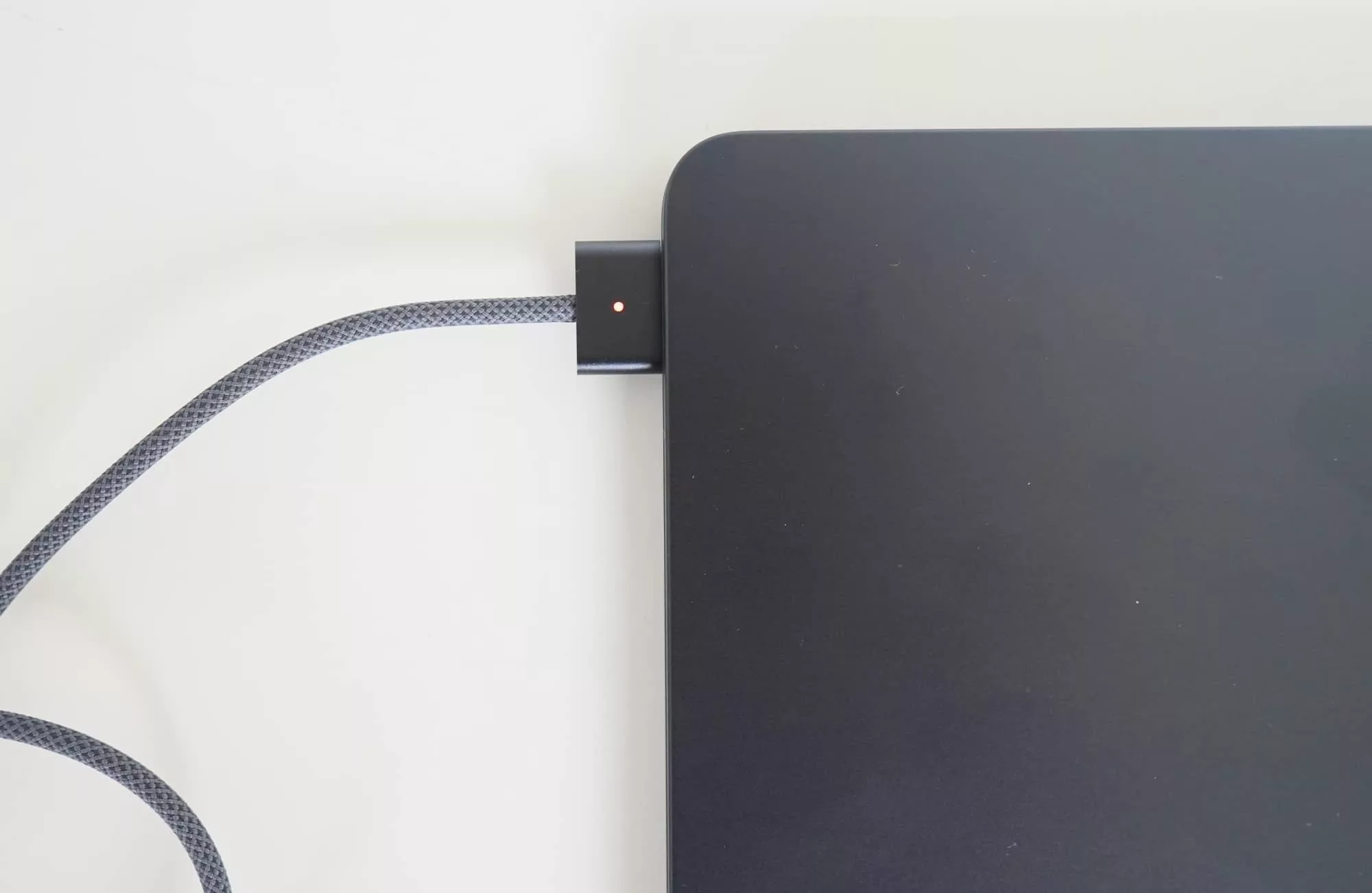
Value
Even the value argument feels fairly strong in this one, though the price of the also-excellent M2 air is fairly compelling, too.
Priced from $1799 in Australia, the MacBook Air M3 is a decent price for what you’re getting: a beautifully designed laptop sporting performance, battery life, great sound, usability, and more.
The model we reviewed was technically the $2399 model, which featured the 8-core CPU and 10-core GPU, distinct from the 8-core CPU/8-core GPU of the entry level, while also upgrading the 8GB RAM/256GB storage to a 16GB RAM/512GB option in our model. Those changes will likely affect performance a little bit, though probably not tremendously, so even folks considering the entry-level option should find a capable machine.
However, Apple has also kept the 13 inch M2 Air ticking around, lowering its starting price to $1599 in Australia. That makes the M2 even more value-driven, and handy for folks who may not need the extra grunt or the support for two monitors when closed, which is the major difference.
Either way, the M3 Air is priced well. It’s about as balanced as it gets, and available in both a 13 and 15 inch version.

What needs work?
Perhaps unsurprisingly, we’re fans of what Apple has made in the Air. We were big fans of the M2 MacBook Air, be it in either the 13 inch or 15 inch models, and shock horror: we’re big fans of this one, too.
So what needs work? Not much, if anything.
Carrying on with a beautiful piece of industrial design (what is an Apple hallmark) and packing performance and battery life aplenty, the M3 MacBook Air is enough Mac for anyone. Even pro-level users will dig it.
But there’s one thing that stumped us on the beautiful midnight blue MacBook Air we checked out in our review: you get a lovely metallic blue Mac and a similarly matched dark blue fabric-lined MagSafe cable… all of which connects to the classic white Apple charging brick.

It might just be us, but the white brick looks odd offset against the dark blue charging brick, and it just doesn’t fit with the design. Almost a design faux pas, it feels like it could be an Eskimo Joe song — rather than Black Fingernails, Red Wine, we could have White Power Brick, Blue Cable.
Minor, for sure, but certainly not the most considered use of colour, especially for a company that values design the way Apple does.

Final thoughts (TLDR)
There’s little to argue about or complain in the 13 inch M3 MacBook Air. This is about where you want computers to be: as close to perfect as it gets. It is practically perfect.
Apple has set a new benchmark for the portable computing with a pint-sized powerhouse. There’s just so much here and nothing to be angry about.
This is a laptop that you’ll want to keep using for ages. And guess what? It’ll probably go on that long, as well. Highly recommended.
